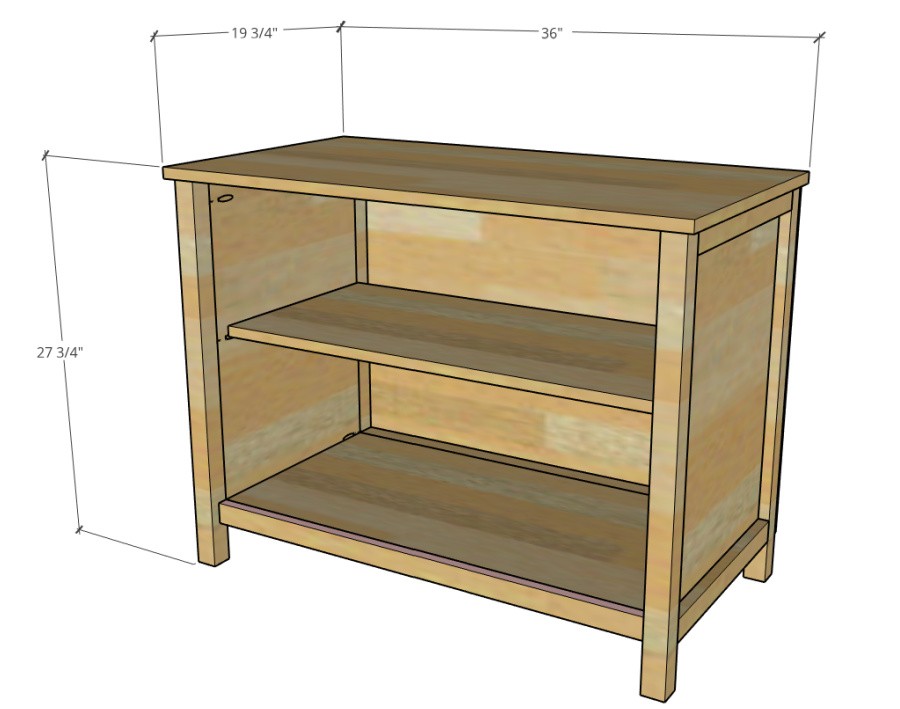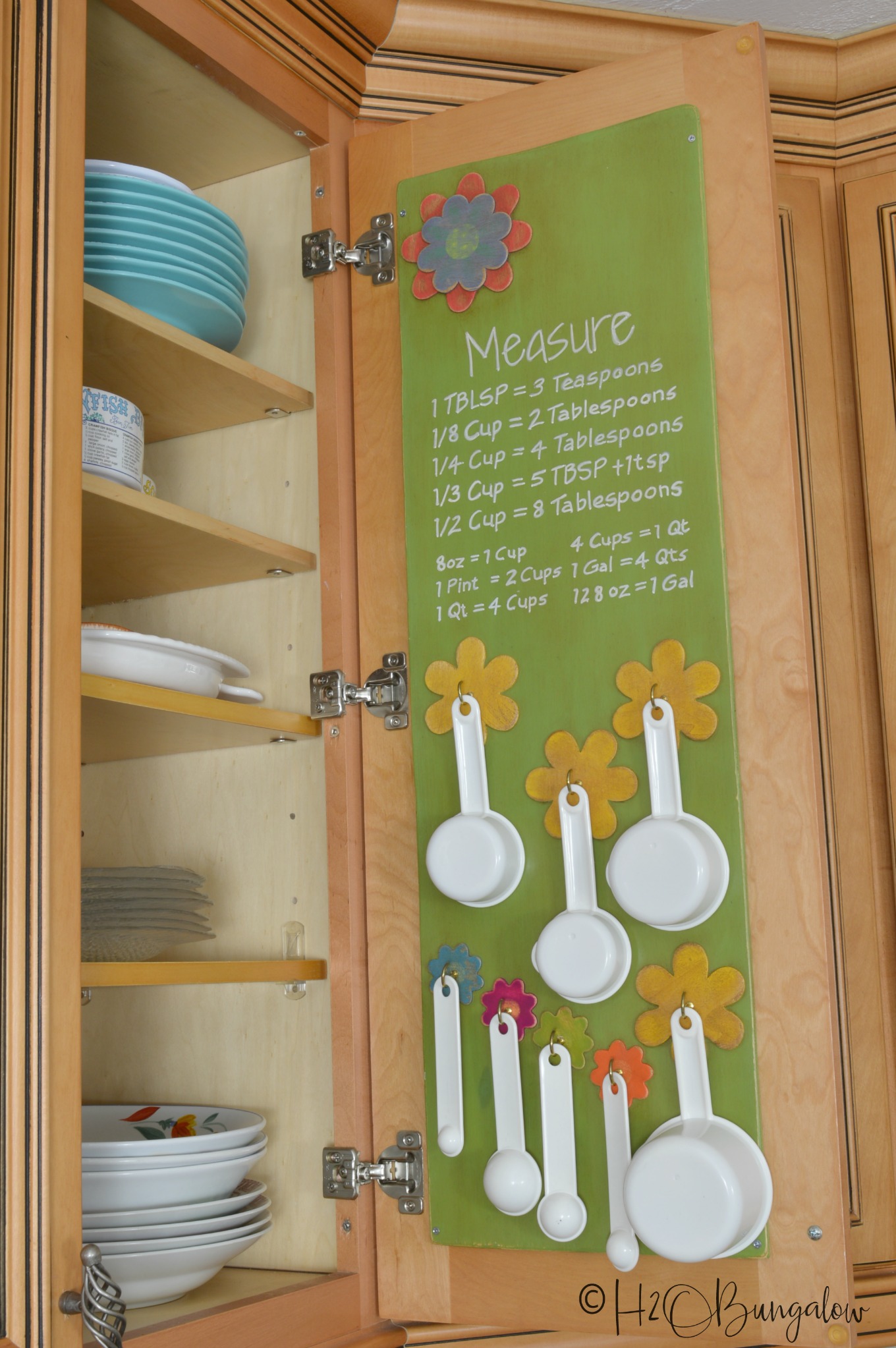To make shelves in cabinets, first measure the cabinet’s width and depth. Next, cut plywood to fit the measurements, and place it in the cabinet to create the shelf.
You can use additional support if necessary, such as shelf brackets or cleats, to ensure the shelf can bear the weight of items placed on it. Now, let’s delve into the process of making shelves in cabinets. When it comes to maximizing storage space and organization in your cabinets, installing shelves can be a game-changer.
By adding shelves, you can store more items in an orderly manner, making it easier to find what you need. This simple DIY project can be completed with basic tools and materials, and it will help you make the most of your cabinet space. We’ll provide a step-by-step guide on how to make shelves in cabinets, offering practical tips and considerations for a successful installation.
Tools Required
When you want to make shelves in cabinets, you will need a combination of basic hand tools and power tools to get the job done efficiently. These tools will help you to measure, cut, install, and finish your shelves with precision and accuracy.
Basic Hand Tools
- Measuring tape
- Pencil
- Screwdriver set
- Level
- Clamps
- Hammer
- Sanding block
Power Tools
- Drill
- Screwdriver
- Saw (Circular or Jigsaw)
- Sander

Credit: www.woodshopdiaries.com
Measuring And Planning
Making shelves in cabinets requires careful measurement and planning to ensure a precise fit.
Taking Accurate Measurements
Measure the inside width, depth, and height of the cabinet to determine the dimensions of the shelves.
Use a tape measure to get precise measurements and account for any obstructions like hinges or handles.
Determining Shelf Placement
Decide on the number of shelves needed and their spacing based on the items you plan to store.
Place heavier items on lower shelves for stability and lighter items on higher shelves for easy access.
Choosing The Right Materials
Enhancing cabinets with custom shelves involves selecting the most suitable materials for durability and aesthetics. Opt for sturdy options like solid wood or plywood to ensure long-lasting and functional storage solutions. Consider the style and size of your cabinets when choosing materials for shelves to achieve a cohesive and practical design.
Types Of Wood
Whether you are building shelves for your kitchen cabinets or any other storage space in your home, choosing the right materials is crucial. One of the primary considerations when it comes to making shelves in cabinets is selecting the right type of wood. The type of wood you choose will determine the overall durability, appearance, and longevity of your shelves. Here are some popular types of wood used for making cabinet shelves:- Hardwood: Hardwood, such as oak, maple, or cherry, is known for its strength and durability. It can withstand heavy loads and is resistant to warping or bending over time. Hardwoods also provide a beautiful and timeless look to your cabinets.
- Softwood: Softwoods like pine or cedar are more affordable and easier to work with compared to hardwoods. However, they may not be as durable and can be prone to dents and scratches. Softwoods are a great option if you are on a budget or if you are looking for a more rustic or country-style look for your cabinets.
Plywood Vs. Solid Wood
When it comes to choosing the right material for your cabinet shelves, another decision you need to make is whether to go with plywood or solid wood. Here are some factors to consider:| Plywood | Solid Wood |
|---|---|
| Plywood is made from thin layers of wood glued together, providing stability and strength. It is less prone to warping or splitting. | Solid wood is a single, solid piece of wood, which offers excellent strength and durability. It provides a more luxurious and high-end look to your cabinets. |
| Due to its construction, plywood is less likely to expand or contract with changes in humidity or temperature, making it a reliable option for cabinet shelves. | Solid wood can be more susceptible to changes in temperature and humidity, which may lead to warping or cracking over time. However, proper sealing and maintenance can help mitigate these issues. |
| Plywood is usually more affordable compared to solid wood, making it a cost-effective choice for those on a budget. | Solid wood is generally more expensive than plywood due to its premium quality and aesthetic appeal. |
Cutting And Preparing The Shelves
When it comes to making shelves in cabinets, the cutting and preparing process is crucial for ensuring that the shelves fit perfectly and are sturdy enough to hold items. In this section, we will discuss the steps involved in cutting and preparing the shelves, including marking and measuring, as well as using a circular saw for precise cuts.
Marking And Measuring
Before cutting the shelves, it’s essential to mark and measure the dimensions accurately. Start by determining the desired height and depth of the shelves within the cabinet. Use a tape measure and pencil to mark the measurements directly on the material that will be used for the shelves.
Using A Circular Saw
Once the shelves are marked and measured, it’s time to cut them to the appropriate size using a circular saw. Ensure that the saw blade is set to the correct depth to prevent overcutting or under cutting the material. Use clamps to secure the material in place and make precise straight cuts with the circular saw.
Installing The Shelves
When it comes to installing shelves in cabinets, it’s essential to focus on precision and attention to detail to ensure a functional and visually appealing result. Installing the shelves is a critical step in the process of making cabinets more organized and convenient to use. With a few simple steps and the right tools, you can easily install shelves in your cabinets to optimize storage space.
Positioning The Shelves
To begin, it’s crucial to determine the appropriate positioning of the shelves within the cabinet. Take accurate measurements of the interior space to ensure that the shelves are placed evenly and at the desired height. Use a level and pencil to mark the positions for the shelves, ensuring they are aligned properly.
Attaching The Shelves
Once the shelves are positioned, it’s time to attach them securely. Using a power drill and appropriate screws, carefully attach the shelf supports to the sides of the cabinet. Ensure that the supports are level and properly aligned before securing them in place. Then, carefully place the shelves onto the supports, ensuring they fit snugly and are level. Use a spirit level to double-check the alignment and make any necessary adjustments.

Credit: h2obungalow.com
Finishing Touches And Tips
Discover expert tips for creating shelves in cabinets with flawless finishing touches. Elevate your storage space with these simple, effective DIY techniques today.
Sanding And Smoothing
Before moving on to applying the finishing touches to your newly installed shelves, it’s important to ensure that the surface is smooth and ready to be painted or stained. Sanding is a crucial step as it helps remove any rough spots or imperfections, giving your shelves a professional and polished look.
Here are some tips for sanding and smoothing your shelves:
- Start by using a coarse-grit sandpaper to even out any major bumps or uneven areas on the surface of the wood.
- Gradually move on to a finer-grit sandpaper to smooth out the surface, focusing on any rough edges or corners.
- Be sure to sand in the direction of the wood grain to avoid leaving visible scratch marks.
- After sanding, use a damp cloth to wipe away any residual dust or debris, ensuring a clean and smooth surface for painting or staining.
Painting Or Staining
Once your shelves are sanded and smoothed, it’s time to add the finishing touch! Whether you prefer a painted or stained look, this step will bring your cabinets to life and perfectly match your desired aesthetic.
If you choose to paint your shelves:
- Start by applying a primer to create a smooth and even surface for the paint to adhere to.
- Allow the primer to dry completely before applying your chosen paint color. Apply multiple thin coats for better coverage and a professional finish.
- Before reinstalling the shelves, make sure the paint is completely dry to prevent any smudging or damage.
If you prefer a natural wood look and decide to stain your shelves:
- Test the stain on a small inconspicuous area to ensure it’s the desired color and matches your existing cabinetry.
- Apply the stain evenly with a brush or cloth, following the wood grain for a seamless and natural finish.
- Once the stained shelves are dry, apply a clear protective coat to seal the wood and enhance its durability.
No matter which finishing option you choose, remember to allow sufficient drying time and handle the shelves with care during this final step. With proper sanding and a beautiful finish, your cabinets will be transformed into functional and stylish storage solutions that perfectly suit your space.

Credit: www.youtube.com
Frequently Asked Questions Of How To Make Shelves In Cabinets
How Can I Measure My Cabinets For Shelves?
To measure your cabinets for shelves, start by determining the height, width, and depth of the interior space. Use a tape measure and note down the measurements accurately. Make sure to account for any obstructions like hinges or slides. It’s important to measure twice to ensure accuracy before cutting your shelves.
What Materials Are Best For Making Shelves In Cabinets?
The best materials for making shelves in cabinets are plywood, MDF, or solid wood. Each material has its own strengths and weaknesses, so consider factors like weight load, ease of installation, and budget when making your choice. Plywood is sturdy and affordable, while solid wood offers a classic look.
What Tools Do I Need To Create Shelves In Cabinets?
To create shelves in cabinets, you will need a set of basic carpentry tools such as a circular saw, drill, tape measure, level, and a square. Additionally, having wood glue, screws, and shelf brackets on hand will make the installation process smoother.
Ensure you have the right tools for accurate cutting and assembling.
How Can I Ensure My Shelves In Cabinets Are Level?
To ensure that your shelves in cabinets are level, use a reliable leveling tool and make precise measurements. You can also use a carpenter’s level or a laser level to guarantee accuracy. Taking your time during installation and using the right tools will help you achieve professionally aligned and level shelves.
Conclusion
To sum up, making shelves in cabinets is a practical and efficient way to maximize storage space in your home. By following the steps outlined in this blog post, you can easily create custom shelves that perfectly fit your needs.
Whether you’re organizing your kitchen, bathroom, or any other room, this DIY project is a cost-effective solution. Get creative and enjoy the satisfaction of a clutter-free and well-organized space. Happy shelf-making!
{ “@context”: “https://schema.org”, “@type”: “FAQPage”, “mainEntity”: [ { “@type”: “Question”, “name”: “How can I measure my cabinets for shelves?”, “acceptedAnswer”: { “@type”: “Answer”, “text”: “To measure your cabinets for shelves, start by determining the height, width, and depth of the interior space. Use a tape measure and note down the measurements accurately. Make sure to account for any obstructions like hinges or slides. It’s important to measure twice to ensure accuracy before cutting your shelves.” } } , { “@type”: “Question”, “name”: “What materials are best for making shelves in cabinets?”, “acceptedAnswer”: { “@type”: “Answer”, “text”: “The best materials for making shelves in cabinets are plywood, MDF, or solid wood. Each material has its own strengths and weaknesses, so consider factors like weight load, ease of installation, and budget when making your choice. Plywood is sturdy and affordable, while solid wood offers a classic look.” } } , { “@type”: “Question”, “name”: “What tools do I need to create shelves in cabinets?”, “acceptedAnswer”: { “@type”: “Answer”, “text”: “To create shelves in cabinets, you will need a set of basic carpentry tools such as a circular saw, drill, tape measure, level, and a square. Additionally, having wood glue, screws, and shelf brackets on hand will make the installation process smoother. Ensure you have the right tools for accurate cutting and assembling.” } } , { “@type”: “Question”, “name”: “How can I ensure my shelves in cabinets are level?”, “acceptedAnswer”: { “@type”: “Answer”, “text”: “To ensure that your shelves in cabinets are level, use a reliable leveling tool and make precise measurements. You can also use a carpenter’s level or a laser level to guarantee accuracy. Taking your time during installation and using the right tools will help you achieve professionally aligned and level shelves.” } } ] }

